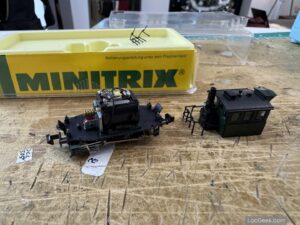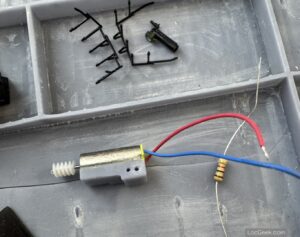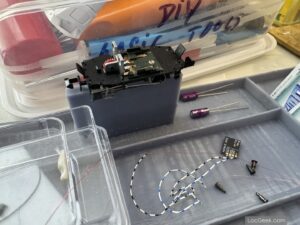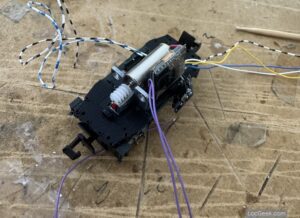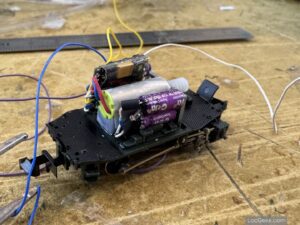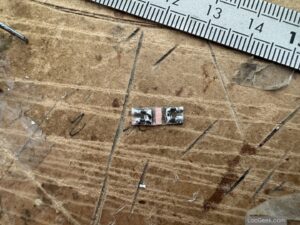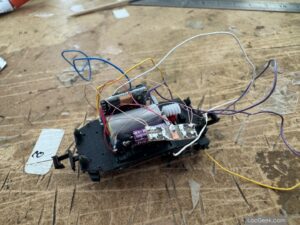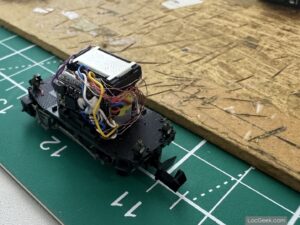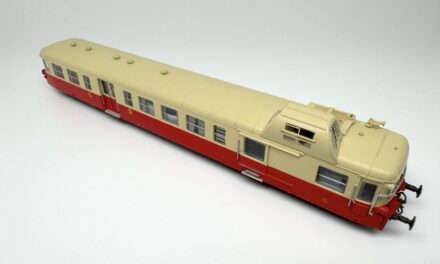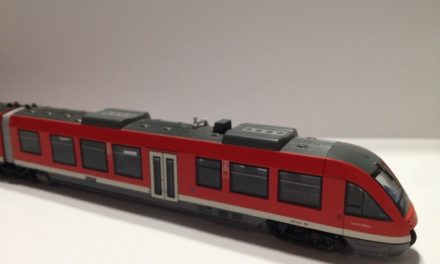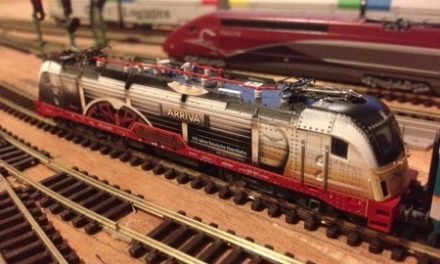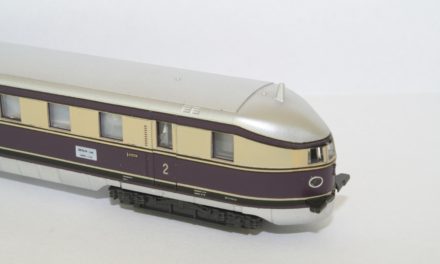The old Minitrix PtL 2/2 “Glaskasten” is one of the smallest N scale models around. This was one of my most challenging sound DCC conversion…
The challenge
The Glaskasten, along with the famous small “Köf” engines is very small (less than 5 cm long in N scale). This Minitrix model was at least 30 years old. It needed an upgrade…but the available space is so small!
There have been multiple excellent conversions posted online. Including this user who installed, among other things, led lights (video in German here). Also this very nice video with sound here. Zimo also posted an “official” conversion with their MS500 sound decoder and Staco Stay alive here.
Now, I wanted to go all in, and went for the following upgrades:
- New motor (necessary anyway to gain some space in the engine chassis)
- Led headlights (albeit limited to the 2 main beams, not including the central light)
- Sound (of course) with a Zimo MS500 sound decoder and a 16×9 soundspeaker
- And a Zimo Staco 4 stay alive, which is really a game changer from Zimo.
The conversion
I won’t detail all the steps here. Suffice to say, it was tricky.
The original motor replacement kit I had ordered from TramFabriek was great, but the motor holder took too much space. So i had to design a (quite basic) motor holder in Tinkercard, and print it in 3D in my resin printer.
Fitting in the Decoder and the Staco board was ok on one side. The Staco capacitors fitting nicely on the other side.
The trickiest part was fitting in the led headlights. I used cheap pre-soldered led ordered from AliExpress, and connected them to a custom board with a 12kO resistor in front of each led. Now, in terms of lighting, I might have been able to fit more (e.g. the central beam, or cabin lighting), but it would have been stretching it. In fact, I did burn one led by not correctly isolating the wire from the rotating wheels, and had to rewire it entirely. That’s not the funniest part.
As for the sound project, well it was easy. I used the free Glaskasten project available on the Zimo website, and uploaded it using my MXULFA programming device. I did have to upgrade the decoder firmware to the latest version (5.5 as I write this).
Here are a few pictures:
Additional thoughts on Zimo products
This conversion wouldn’t have been possible with the extremely small MS500 sound decoder from Zimo (and they even announced a slightly smaller MS501 for 2025). The same is to be said about their excellent range of “Staco” stayalive boards, that give the engine up to several seconds of power in case of interruption. This is a game changer, especially for such small engines, and barely takes more space than the more traditional 16V capacitor system.
Now I have already written a lot about Zimo. And I stand by my few criticisms: their products are so complex (in a good way) than using them or trying to understand the manuals sometimes make you feel like you need an engineer’s degree.
But to be fair, they do build products that have no comparison on the market at this point. They also have an extremely responsive and friendly customer service.
Also, they get better. For example, one of my pet peeves was their (terrible, terrible) 1990s-looking website: they announced they are going to revamp it this year. I hope it’s going to be much more user friendly (not only in terms of interface, but also in term of how the information is organised).
Also, with the launch of the MS sound decoder range and high quality 16bits sound, Zimo has been releasing quite a few free high quality sound projects (including this one for the Glaskasten). This is very welcome and will make a difference in the total price of an installation, while of course I have already bought a few sound projects from some other sources in the past (and I am happy to support the very niche market of model train sound recording).
Conclusion and video
I just love my new Glaskasten. Plus, notwithstanding the technical aspects: it’s a damn cute locomotive ! Make sure you have a look at the video at the top of the article or linked here.

